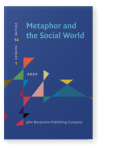Vol. 12:1 (2022) ► pp.46–68
Metaphors of cultural diversity at UNESCO
Legitimization strategies of a new keyword in institutional discourse
This paper analyses metaphors and analogies of cultural diversity at UNESCO in a discursive and rhetorical-argumentative framework, to answer the following question: How do these rhetorical devices play a legitimizing role when introducing a new keyword into the public sphere? Conventional and creative metaphors are analyzed separately to examine if they represent different legitimization strategies. Conventional metaphors and analogies include variations on treasure, heritage, and biodiversity; creative metaphors include cultural diversity as a living treasure and a Rainbow River. The findings suggest that the wealth metaphor fulfills an evaluative meliorative function, while the heritage metaphor constructs a collective identity devoid of internal conflict, thereby depoliticizing the concept of cultural diversity. The biodiversity analogy further depoliticizes cultural diversity via naturalization and the invocation of the authority of science. Legitimization is also achieved by invoking past discourse and shared knowledge, and by tapping into UNESCO’s “discursive memory.” In contrast, the creative metaphors living treasure and Rainbow River play a different argumentative role: they offer a rhetorical solution of coexistence to two contradicting views on culture; one as a static, closed entity to be protected from extinction, and the other as a changing, dynamic process. They do so by fusing both views, represented by different metaphors, into one creative metaphor.
Article outline
- 1.Introduction
- 2.Theory and methodology
- 2.1Institutional discourse and epideictic genre
- 2.2Metaphors, analogies, and argumentation
- 2.3Conventional and creative metaphors
- 3.Cultural diversity as a treasure
- 4.Cultural diversity as the common heritage of humanity
- 4.1The construction of a universal collective
- 4.2Discursive memory
- 5.The analogy to biodiversity
- 5.1Legitimization based on previously shared knowledge
- 5.2Legitimization based on nature and science
- 6.Creative metaphors: The Rainbow River
- 6.1Cultural diversity as a river
- 6.2Cultural diversity as a Rainbow River
- 7.Conclusions
- Notes
-
References
